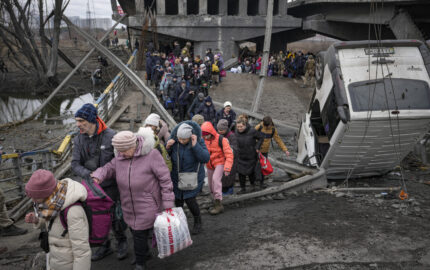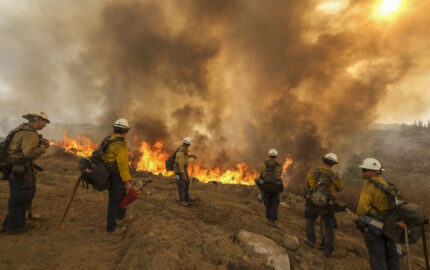This past year has been characterized by threats to democracy — and to journalism. Though many election-denying Republican candidates were defeated in the 2022 mid-term elections, former president and current presidential candidate Donald Trump continues to spread disinformation about the 2020 results, claiming his lies about his loss in that vote allow “for the termination of all rules, regulations, and articles, even those found in the Constitution.” Around the world, from Kashmir to Russia to Mexico and beyond, press freedoms are eroding as governments pass laws to curb critical reporting, throw journalists in jail for simply doing their jobs, and use technology to censor the pursuit of truth, as Nieman Reports chronicled in our essay series, Reporting at Risk. Our 2022 features reflected the urgency of these threats. We also focused on emerging beats and how coverage is evolving to keep pace with social and technological change. Here are five of Nieman Reports’ most important and timely feature stories of the past year:
The January 6 insurrection was a wake-up call for the United States — and for newsrooms — that American democracy faces real and present dangers. Celeste Katz Marstonexplores how newsoutlets are developing democracy beats to cover local election agencies, statehouses, and school boards — and to look beyond traditional horse race coverage and bothsidesism.
Bonus story: In Political Coverage is Changing to Get Beyond ‘Us Versus Them’, Celeste Katz Marston examines how a more nuanced depiction of voters and issues can help newsrooms better report on elections and political campaigns.
Press freedom in post-Soviet states fluctuates, lying somewhere between the freedom of the Baltics and the authoritarianism of Russia itself. The threats are physical, financial, and technological. Russia’s invasion of Ukraine is a powerful reminder of the vital work these journalists and their newsrooms do — and how precarious press freedoms are in the face of aggression from Putin and other authoritarian leaders around the world. As Ukrainians defend their country against Putin’s barbaric war, Ann Cooper looks at how the independent press is surviving in Ukraine, Moldova, Armenia, and Georgia.
After years of declining coverage, more newsrooms are making workplace safety, unionization, and remote work front-page stories. Steven Greenhouse explains why and how the beat has expanded to include everything from how Uber treats its drivers to issues like the #MeToo movement, work-family balance, and the lack of childcare. During the pandemic, traditional concepts of office work were radically altered and the relationships between employers and employees changed. All this raises broader questions around the labor beat that journalists will need to continue to cover.
Bonus story: In Newsrooms Are Unionizing Pretty Much "Nonstop." Here's Why, Greenhouse analyzes how journalists are responding to consolidation and ongoing revenue challenges by joining the unionization wave.
In an industry that has traditionally prioritized objectivity and distance, it may seem counterintuitive for journalists to take the mental health of their sources into account. But over the last few years, as the pandemic and the fight for racial justice forced newsrooms to reevaluate which voices are elevated, the toll the process of being included in a story can take on vulnerable people has come into focus. Reporters and photographers have begun centering the perspective of their sources, staying clear of tropes, and recognizing a wide range of traumas. Julia Craven chronicles how trauma-informed reporting can help journalists better connect with sources dealing with grief, pain, and loss.
Open-source investigations (OSI) are based on any information that can be publicly accessed by others, including everything from local newspaper articles to satellite imagery to images shared on TripAdvisor. Over the past few years, newsrooms have started building their own OSI teams, combining them with more traditional reporting methods, in part to verify social media posts and in part to report on places where it is simply too dangerous for journalists to venture. Spurred by Russia’s invasion of Ukraine, open-source investigations are now being integrated into standard newsroom practice. Maxim Edwards of open-source outlet Bellingcat explains.



